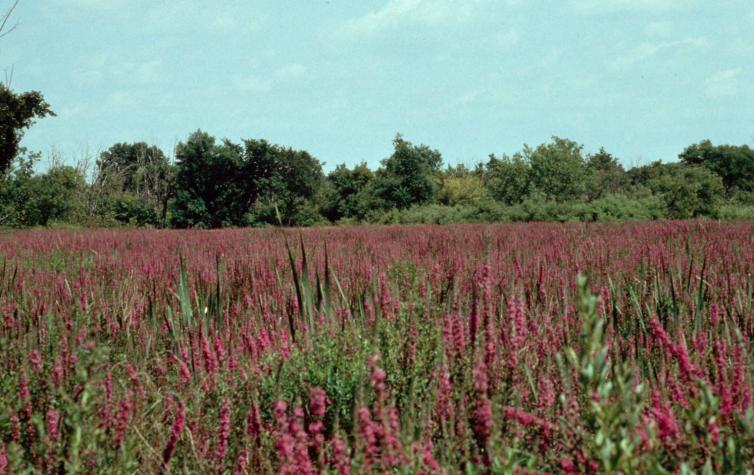BLUE SPRINGS, Mo. — When buying plants you sometimes need to read between the lines. When the label says the plant “fills in quickly,” that may be a code word for “invasive.”
“It pays to do a little research, ask some questions and check with other gardeners before purchasing plants,” said Pat Miller, University of Missouri Extension agronomy specialist.
Miller identifies some species you might think twice about planting:
Purple loosestrife is actually on the Missouri noxious weed list. “And rightly so, as it multiplies quickly, especially in wetlands, and crowds out desirable plants,” Miller said.
Perilla mint is a beautiful plant but it is also highly toxic to livestock. Although it is an annual,it reseeds profusely. “If planted in the vicinity of pastures, it could become a serious problem,” she said. “And you have to consider that plant seeds can be spread by wind, water or animals.” Fortunately, as with many toxic plants, animals usually avoid it unless a lack of forage forces them to eat it.
Vinca, especially Vinca major, can be invasive. Or it can be an aggressive ground cover that crowds out weeds. It depends on your perspective.
“I use vinca under established trees and large expanses under my deck and herd it back into place with herbicide,” Miller said. “It reduces my need for weeding and mulch, so for me it is merely ‘aggressive.’”
Showy evening primrose with its pale pink flowers grows sporadically along rocky roadsides and wildflower plantings in dry areas. “But plant it in a fertile, well-watered flower bed and you’d better look out. It can take over,”
Lily turf can vary in aggressiveness depending upon species. Creeping lily turf (Liriope spicata) is aggressive, but big blue lily turf (L. muscari) and variegated lily turf (L. muscari ‘Variegata’) are clump-forming and thus much tamer.
For more information, check out the following MU Extension publications, which are available online for free download:
- “Flowering Perennials: Characteristics and Culture” (G6650).
- “Selected Ground Covers for Missouri” (G6835).
Writer: Mildred Carter
